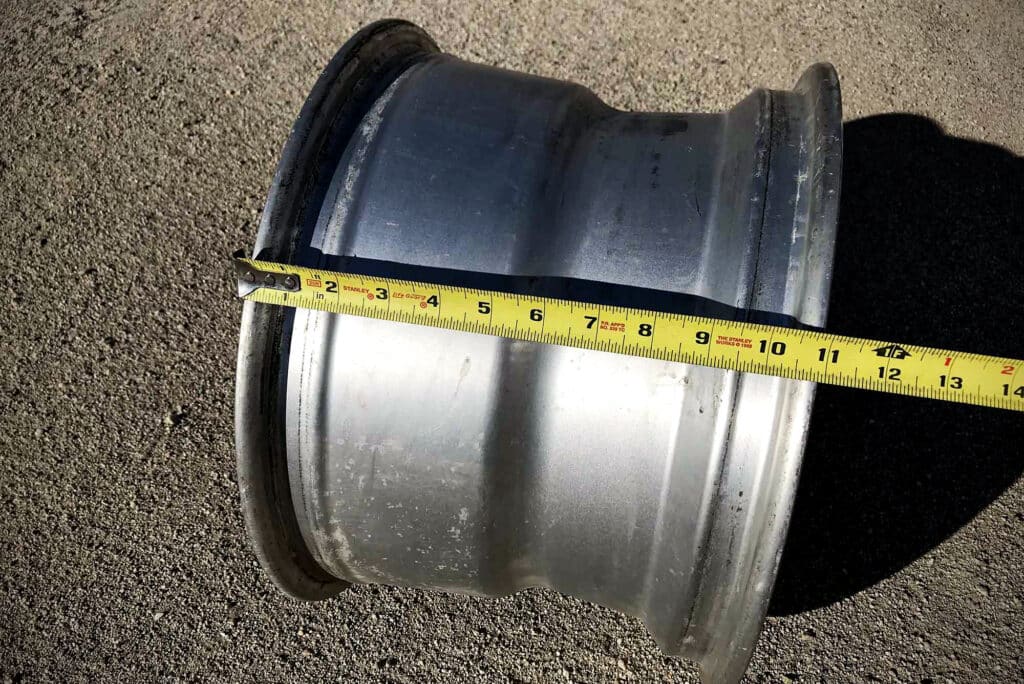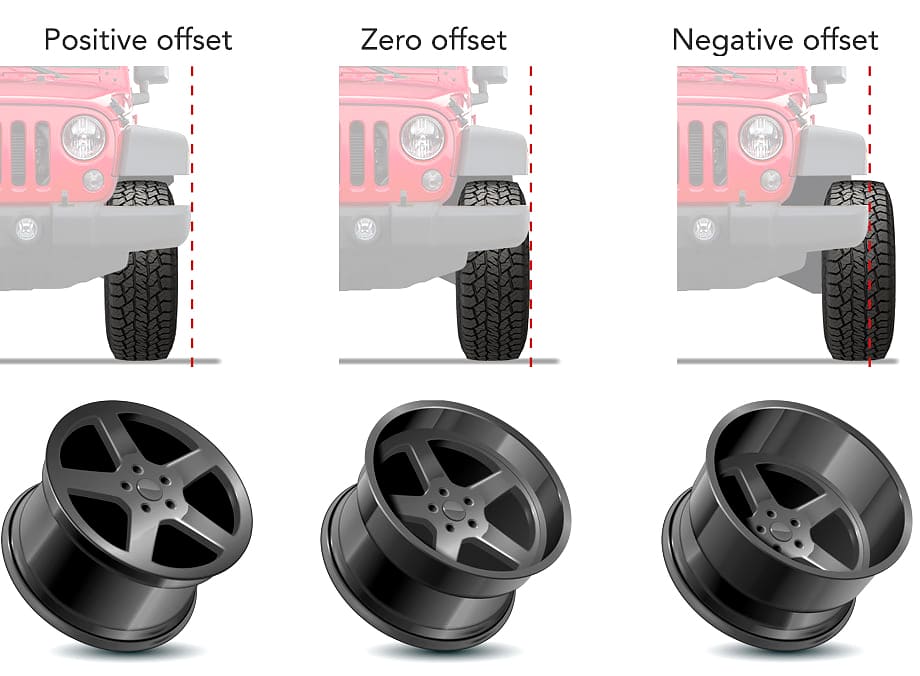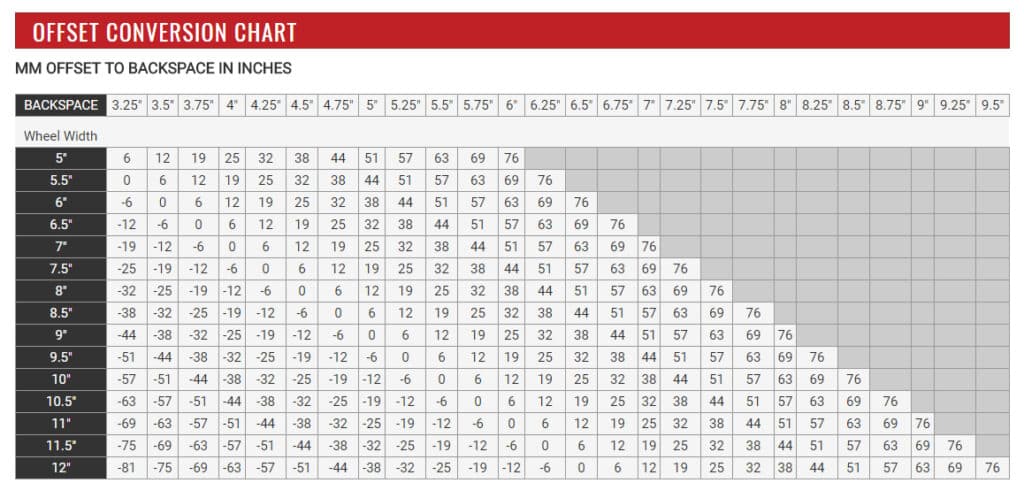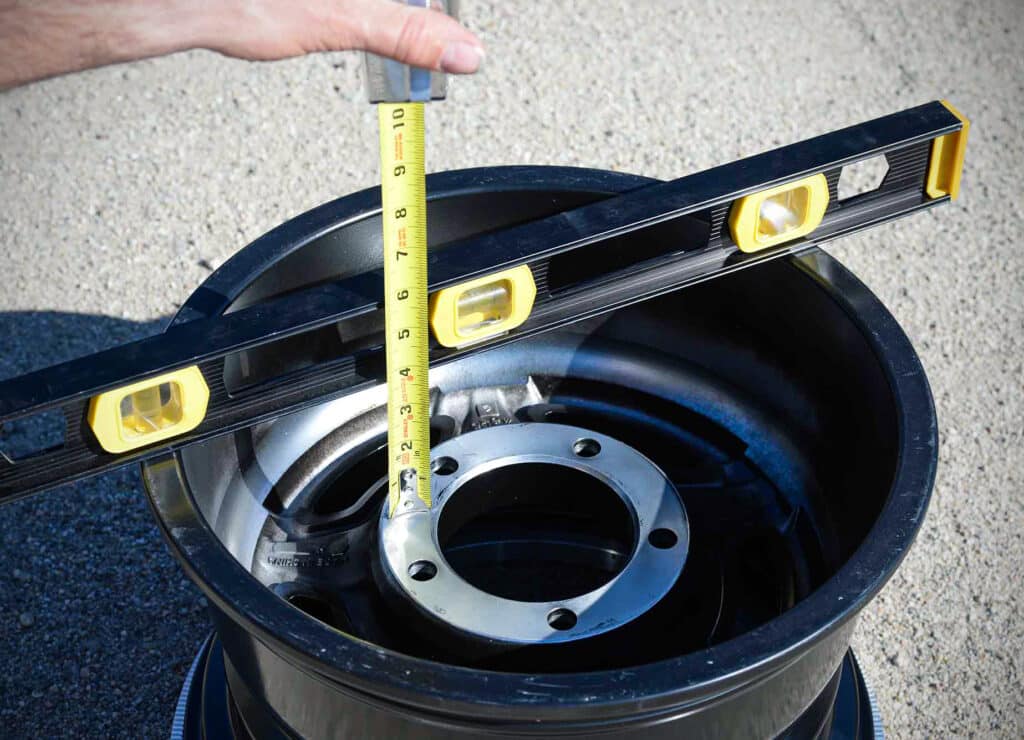Wheel backspacing and offset are tech specs that you’ve likely come across when shopping for aftermarket rims.
Unlike some tech specs that you can gloss over, you absolutely cannot ignore wheel backspacing if you’re in the market for a new set of wheels.
Backspacing, in conjunction with offset and wheel width, determines what sort of rim is best suited for your car or truck.
But what is wheel backspacing anyway? How does it work?
In this article, we’ll explain what rim backspacing is and how it relates to wheel offset, and we’ll conclude with a chart.
Wheel Backspacing Explained
On the face of it, wheel backspacing is fairly similar to wheel offset. The differences are minute, and both concepts are better understood visually.
Let’s say you have a stock 19×10-inch wheel and you want to measure its backspacing. You’re going to want to measure in inches because that’s the industry standard.

However, wheel offset is measured in millimeters, so there is a fair bit of conversion involved for both imperial and metric users.
Okay, let’s start with the definition. Wheel backspacing is the measurement between the mounting surface of your rim where it bolts onto the hub and the back lip of your wheel.
So a wheel with a numerically higher backspace will sit further inward than a wheel with a lower backspace that protrudes outward.
So if you want a rim that sits in line with the fender or maybe protrudes a bit outward compared to your stock setup, look for a rim with a lower backspace measurement than what you already have.
For this, you’re going to want to know how to measure your car’s rim size correctly.
However, don’t ignore offset and wheel width — not to be confused with track width — since the two measurements are crucial when choosing the right wheel size and overall design.

Before we move into what wheel offset is, let’s quickly go over how wheel width is measured. Let’s go with the 19×10-inch example mentioned above.
It’s worth noting that the 10″ width is the distance from bead seat to bead seat, not lip to lip.
Backspacing, however, extends to the lip and has nothing to do with the bead seat, just like wheel offset. Which brings us to the next part.
Difference Between Offset and Rim Backspacing Explained
Much like backspacing, wheel offset is measured from the mounting surface, but instead of extending to the lip, offset factors in the wheel’s centerline.

So wheel offset is the distance between the hub mounting and the centerline of the wheel. There are three types of wheel offset:
- Positive offset: The mounting surface sits on the front half of the wheel, towards the outer side.
- Zero offset: The mounting surface sits exactly on the wheel’s centerline.
- Negative offset: The hub sits away from the centerline, closer to the wheel’s back lip.
Most OEM wheels have positive offset rims while deep-dish rims, the kind you see on stanced cars, have a negative offset. These wheels are often paired with excessive negative camber fitment for aesthetic reasons.

To conclude, positive offset will create more backspacing, while negative offset reduces the wheel backspace. Now let’s discuss why these are important.
Why Are Backspacing and Offset Important?
If you select a rim with improper backspacing and offset, you run the risk of running into clearance issues between the wheels and the suspension, braking, and steering components.
Also, it’s important to choose the right wheels with respect to your car’s backspace, offset, and wheel width requirements to ensure handling and tire wear aren’t affected.
Offset and Wheel Backspacing Conversion

To know what wheel offset to select, you first need to determine the wheel width and backspacing. Let’s take the stock 19×10 example as above, with a rim width of 10 inches.
To measure backspace, you’ll have to place the wheel flat on the ground (face down) with a wooden plank or a straight edge across its diameter.
Measure from the wheel’s mounting hub to the bottom surface of the plank.

Let’s say you got a reading of 127 mm (5 inches). Using the chart we see that for a wheel width of 10 inches with a 5-inch backspace (it’s easier to read the chart if both units are in inches), the required offset is -12.
So now you have the measurements to choose the correct wheels for your car.
Concluding Summary
When you’re out shopping for wheels, you can count on reputable shops to give you the right fitment-related advice.
But if you’re buying your wheels online or if you’ve found a sweet pair of used rims that you’ve been eyeing for a while, it’s highly recommended that know your wheel measurements to avoid confusion.
Have you ever purchased the wrong wheel size? What issues did you run into? Let us know by leaving a comment below!
If you found this article useful, consider sharing it with friends and family. We appreciate your support!
![Wheel Backspacing Explained: Learn What It Is & How It Works [With Chart]](https://low-offset.com/wp-content/uploads/2023/10/wheel-backspacing-800x430.jpg)
